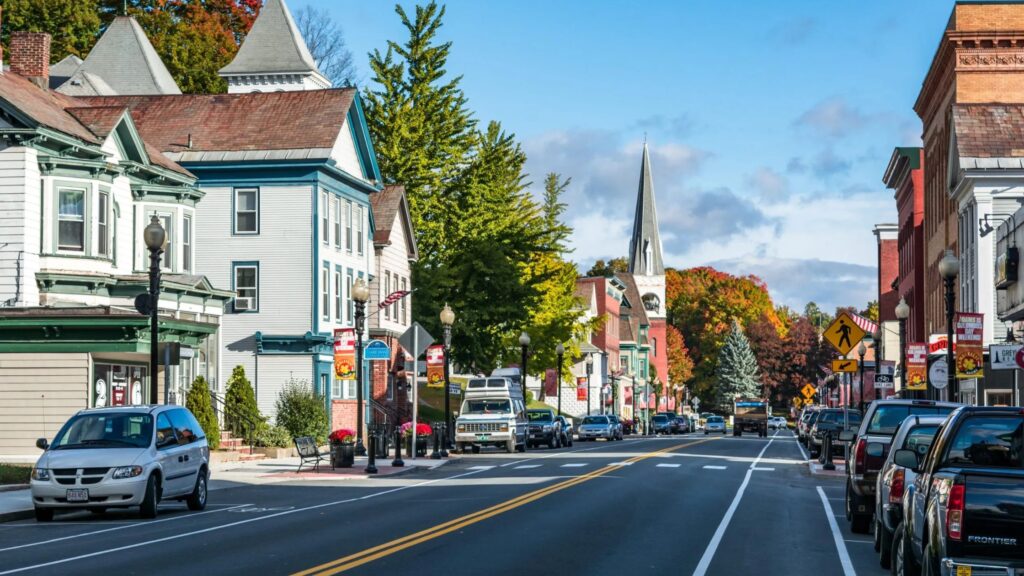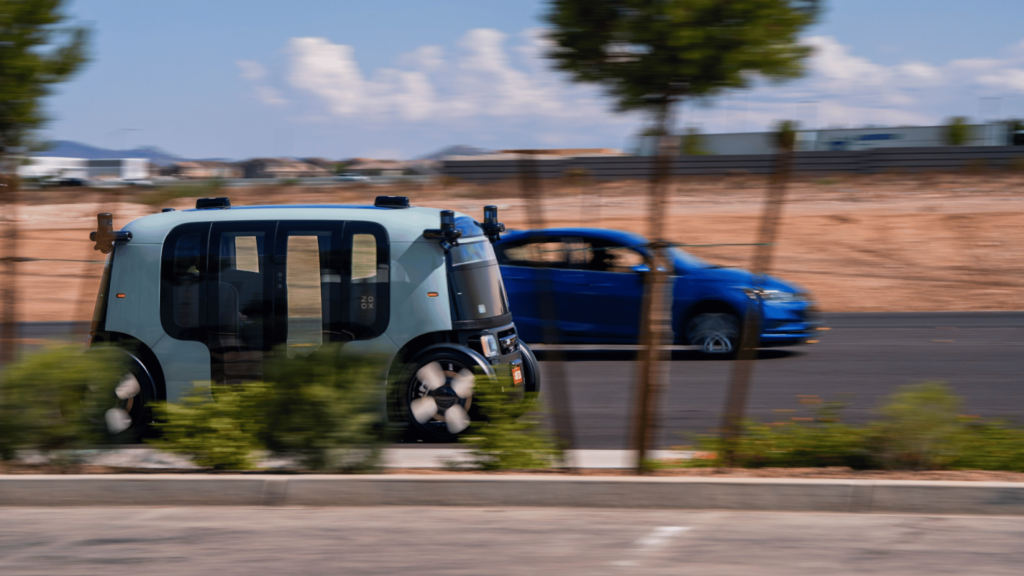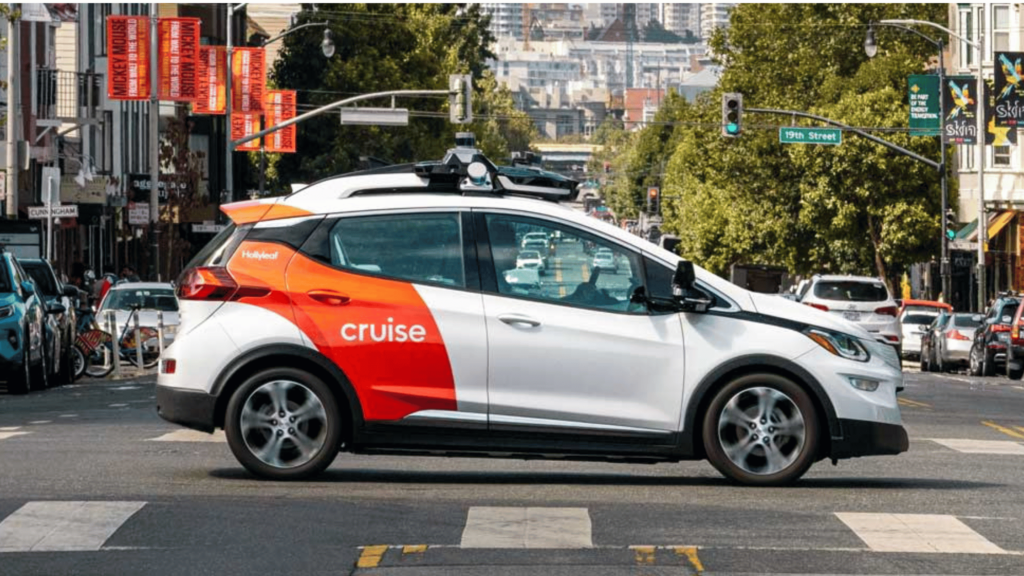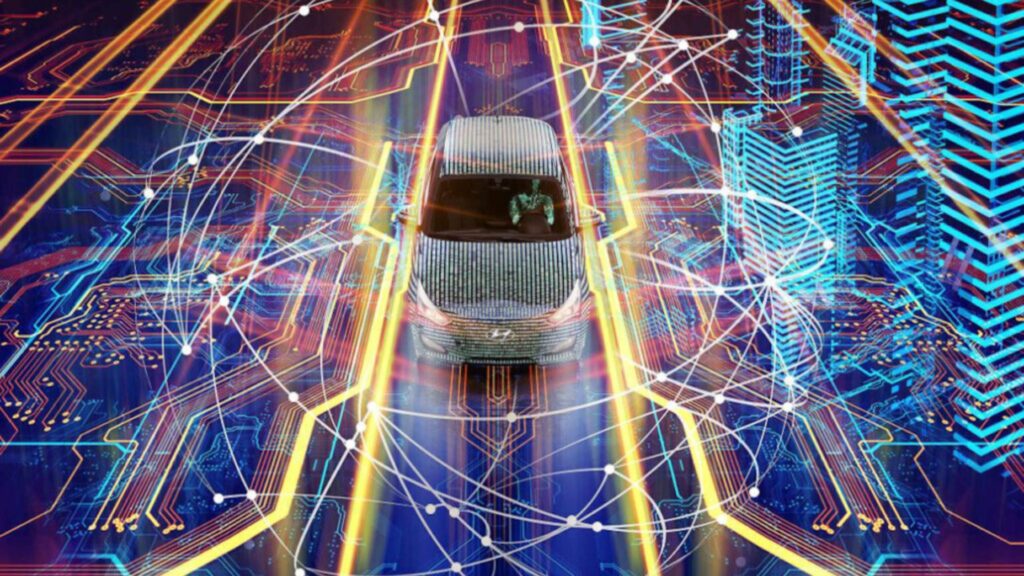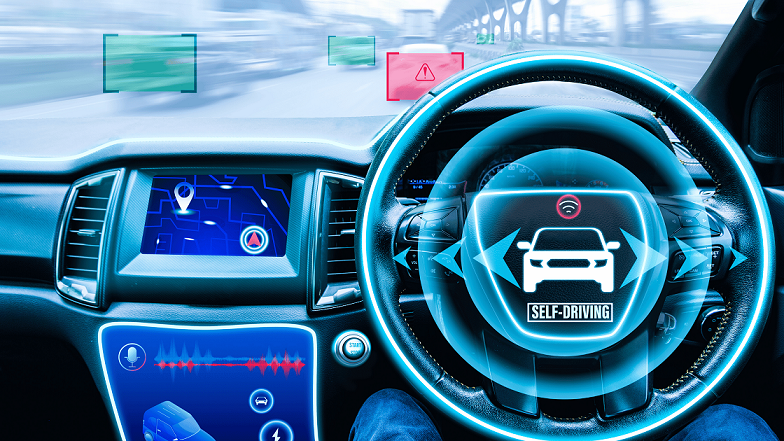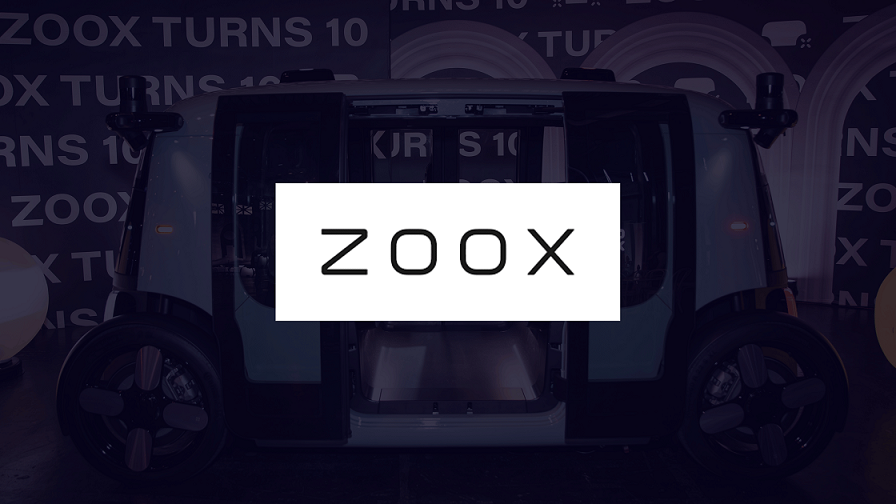Table of Contents
In July 2025, Waymo achieved a remarkable milestone that underscores its position as the global leader in autonomous vehicle technology: 100 million miles driven without a human driver. It’s safe to say that this achievement is beyond numbers alone—it’s a testament to over 15 years of relentless innovation, testing, and refinement that began as a small project within Google’s walls in 2009.
Waymo’s journey began in 2009 as a small project within Google and has since evolved into one of the world’s most advanced autonomous driving programs. What started as an ambitious experiment has transformed into a commercial reality, with robotaxis now serving passengers across multiple major cities including Phoenix, San Francisco, Los Angeles, Austin, and Atlanta.
To understand the magnitude of 100 million autonomous miles, consider this: that’s enough to drive to the Moon and back 200 times. This extensive real-world experience has provided Waymo with an unparalleled dataset for training and improving their autonomous driving systems, contributing to their current operation of more than two million miles per week autonomously.
I’ve curated a timeline that chronicles the key milestones in Waymo’s autonomous driving journey, mapping their progression from experimental technology to a commercial service that has fundamentally changed how we think about transportation.
Waymo’s 100 Million Autonomous Miles Timeline
Here’s a timeline of Waymo’s major autonomous mile milestones, based on available data:
| Miles Reached | Date | Notes |
|---|---|---|
| 1 Million Miles | June 2015 | |
| 4 Million Miles | November 2017 | |
| 7 Million Miles | June 2018 | |
| 8 Million Miles | July 2018 | |
| 10 Million Miles | October 2018 | |
| 20 Million Miles | January 2020 | |
| 1 Million Miles | January 2023 | Rider-Only |
| 25 Million Miles | July 2024 | Rider-Only |
| 50 Million Miles | December 2024 | Rider-Only |
| 100 Million Miles | July 2025 | Rider-Only |
The Foundation Years (2009-2015)
2009: The Google Self-Driving Car Project Begins
The story of Waymo begins in 2009 when Google launched its self-driving car project, initially led by Sebastian Thrun. This marked the company’s entry into what would become one of the most transformative technologies of the 21st century.
2012-2015: Early Testing and Development
During these formative years, Google’s self-driving cars underwent extensive testing on private roads and controlled environments. The focus was on developing the core technology stack and proving the fundamental concepts of autonomous navigation.
The Million-Mile Milestones Era (2015-2018)
2015: Reaching the First Million Miles
Waymo’s fleet achieved its first million autonomous miles (in testing mode) sometime in 2015. In June 2015, Waymo announced that their vehicles had driven over 1,000,000 mi (1,600,000 km) and that in the process they had encountered 200,000 stop signs, 600,000 traffic lights, and 180 million other vehicles.
2016: Birth of Waymo
In December 2016, Google spun off its self-driving car project into a separate company called Waymo, signaling its commitment to commercializing autonomous vehicle technology.
2017: Accelerating Progress – 4 Million Miles
Waymo had logged just 4 million miles in November 2017, showing steady progress in accumulating real-world driving experience.
2018: The 10 Million Mile Breakthrough
Waymo reached a significant milestone in October 2018 when its autonomous vehicles had driven 10 million miles on public roads. The pace was clearly accelerating, as the company hit 8 million miles in July and had logged just 4 million miles in November 2017.
The Commercial Launch Era (2019-2022)
2020: Commercial Operations Begin
Waymo first began offering fully autonomous rides to the public in October 2020 in Phoenix, Arizona. This marked the transition from pure testing to commercial service delivery.
2020-2022: Steady Growth
During this period, Waymo continued expanding its autonomous miles while simultaneously launching commercial operations. The focus shifted from pure mile accumulation to providing reliable service to paying customers.
The Scale-Up Phase (2023-2024)
In January 2023, Waymo announced it had reached its first rider-only autonomous miles, an achievement that would pave the way for more.
2024: Multi-City Expansion
Throughout 2024, Waymo significantly expanded its operations beyond Phoenix. The company is now operating in Los Angeles, Phoenix, San Francisco, Atlanta and Austin, greatly increasing the rate at which autonomous miles were accumulated.
2024: 25 – 50 Million Mile Threshold
Waymo’s growth accelerated dramatically in 2024. By July, the company reported 25 million rider-only miles, with its fleet of over 1,500 Jaguar I-PACEs and Chrysler Pacifica minivans serving 100,000 paid rides per week across Phoenix, San Francisco, Los Angeles, and Austin. By December 2024, Waymo doubled this figure to 50 million miles, driven by expanded service areas, including a 180-square-mile region in Arizona and partnerships with Uber in Atlanta. Safety data showed Waymo’s vehicles had 92% fewer bodily injury claims and 88% fewer property damage claims compared to human drivers over 25 million miles
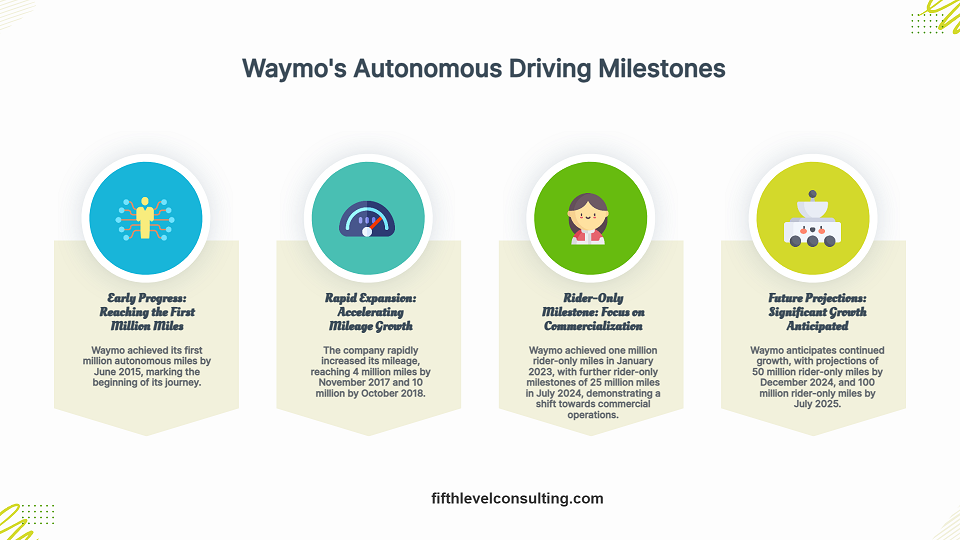
The 100 Million Mile Achievement (2025)
July 2025: The Historic Milestone
In July 2025, Waymo announced it had surpassed 100 million fully autonomous miles, doubling its mileage from 50 million at the end of 2024. This milestone, achieved in just seven months, reflected Waymo’s rapid scaling, with over 2 million miles logged weekly across six cities: Phoenix, San Francisco, Los Angeles, Austin, Atlanta, and a new testing phase in Tokyo. The company completed over 10 million paid rides by May 2025, with plans to expand to Washington, D.C., and New York in 2026. Waymo’s safety record continued to outperform human drivers, with an 85% reduction in injury-causing crashes and a 57% reduction in police-reported crashes.
You May Also Like:
Autonomous Vehicles: 10 Amazing Things to Know About Waymo in 2025
6 Best Self-Driving Cars in the US (2025)
Current Operations Scale
The 100 million mile milestone coincides with impressive operational metrics:
- More than 10 million autonomous trips completed as of May, up from 5 million trips at the end of 2024
- Operating across five major metropolitan areas
- Hit 250,000 weekly rides by April, 2025
Key Milestones Summary
Based on available data, here’s the estimated timeline of Waymo’s major autonomous mile milestones:
- 1 Million Miles: June 2015
- 4 Million Miles: November 2017
- 7 Million Miles: June 2018
- 8 Million Miles: July 2018
- 10 Million Miles: October 2018
- 20 Million Miles: January 2020
- 1 Million Miles (Rider-Only): January 2023
- 25 Million Miles (Rider-Only): July 2024
- 50 Million Miles: December 2024 (Rider-Only)
- 100 Million Miles: July 2025 (Rider-Only)
Conclusion
Indeed, Waymo leads. The company’s unwavering commitment to safety, innovation, and the methodical development of autonomous vehicle technology is nothing short of outstanding. From its humble beginnings as Google’s experimental self-driving car project in 2009 to becoming the world’s most experienced autonomous vehicle operator, Waymo has consistently pushed the boundaries of what’s possible in transportation technology. What’s more, Waymo is the only autonomous vehicle company in the United States to offer autonomous paid rides to commuters.
The journey from the first million miles in 2015 to 100 million miles in 2025 tells a story of technological improvement and commercial consistency. What began as a moonshot project has evolved into a practical transportation service that is reducing injury-causing collisions by around 80% compared to human drivers.
Waymo’s expansion will only get stronger. The next 100 million miles will likely be achieved in a fraction of the time it took to reach this historic first milestone, bringing us closer to a future where autonomous vehicles are a common sight on roads worldwide.
Also Read:
Drunk Driving Fatalities in the US: Autonomous Vehicles to the Rescue
Top 5 Autonomous Trucking Companies in the US (2025)
Must-Read: Top 10 Autonomous Vehicle Trends (2025)

I’m Dr. Brandial Bright, also known as the AVangelist. As a dedicated and passionate researcher in autonomous and electric vehicles (AVs and EVs), my mission is to educate and raise awareness within the automotive industry. As the Founder and Managing Partner of Fifth Level Consulting, I promote the adoption and innovation of advanced vehicle technologies through speaking engagements, consulting, and research as we progress to level 5 fully autonomous vehicles.


